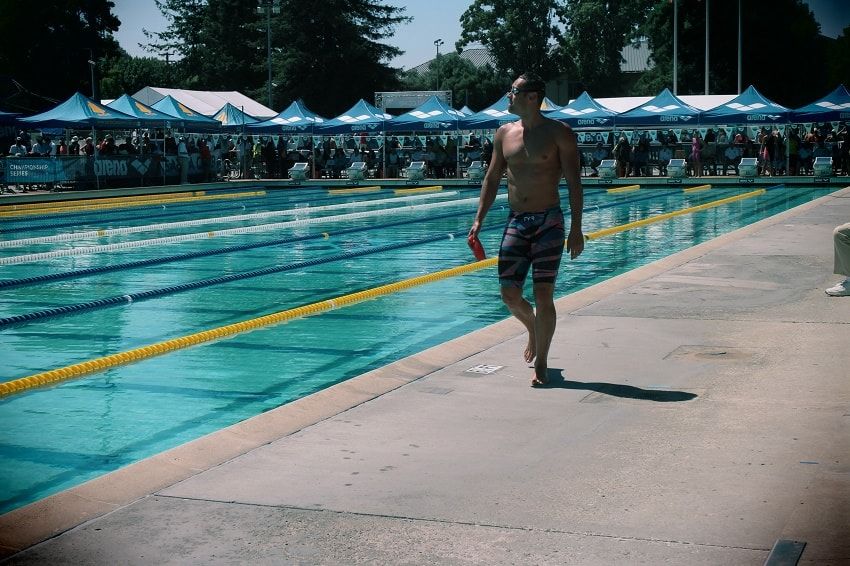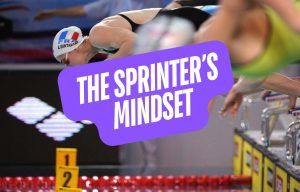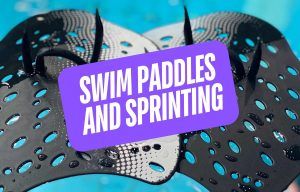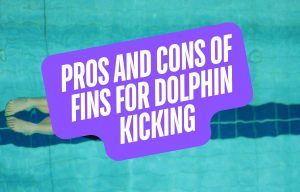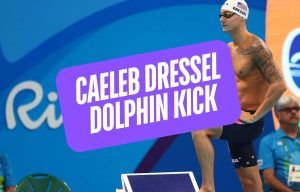This is a guest post by Mike Alexandrov, two time Olympian and NCAA breaststroke champion. Mike stopped by to share a breaststroke drill progression designed to improve your breaststroke pull from top to bottom. Game on.
The breaststroke pull has three phases:
- The out-sweep
- The in-sweep
- The recovery of the arms.
When trying to master each of those phases of the stroke, it is important to break them down individually.
You want to work on 3 separate 25’s, for example, for the 3 separate drills described below, in order.
1. The Out-Sweep.
The ‘wind-shield’ wiper drill is my favorite drill here.
- You start by laying on flat on the surface of the water, keeping the elbows close to the surface and moving the forearms back and forth (keeping the wrists lower than the elbows).
- Go as far wide as your elbows will go during the widest part of the pull and keep them there, the forearms will do the work and propel you forward.
- The legs are just floating behind you, not doing any work.
Try to work on balance and keeping the feet up by tightening the body’s back core muscles. The main part of the drill is to work on the out-sweep of the forearms, and then float forearms back together in front of you.
I call it a wind-shield wiper drill because the forearms will act as the wipers. Envision a freight truck which sometimes has the wipers suspended on the top of the windshield rather than the bottom (like most cars):
2. The Corner Drill.
This drill (which refer to as the “Y” drill), happens at the part of the stroke where the out-sweep transitions to the in-sweep.
This part is crucial in holding on to as much water as possible to get some lift and to get ready for the 3rd phase of the pull, the recovery of the arms (getting set up here, again the legs are not doing anything, but floating as in the former drill).
- Initially the arms are at a Y and at the widest part of the stroke.
- Position your body so that you are flat and balanced, arms underneath the water, getting ready for the in-sweep.
- When you feel ready, and are at a dead-stop, begin the in-sweep as you immediately turn the palms to face slightly behind and down.
- Make sure not to ‘collapse’ the elbows, the elbows need to stay slightly wide, but let the hands come in-front of the head, still thinking of the wind-shield wiper analogy.
- The hands will eventually to face each other throughout the recovery, but the drill ends just prior to the recovery of the arms.
- Connect the palms to the forward thrust of the hips. Backing up slightly, the turn of the palms is very important here. Don’t ‘cut’ the water, but rather hold on to it by turning the palms towards your hips.
- Simultaneously make sure to engage the bicep-femoris, semitendinosus and semimembranosus (3 muscle names that we call the ‘hamstring’) as well as the gluteus muscle (butt muscle) as the heels come up to the hips.
This is the ‘forward thrust’ that I am referring to. To prevent a slow recovery of the heels, make sure to ‘snap’ and make it an explosive movement. The arms stop at the end of the the in-sweep as you take a breath and the hands are in front of your head. At this point, the heels have reached the height of their recovery (hopefully the hips).
Related: How to Fix and Prevent Breaststroker’s Knee
Repeat until you get to end of 25, resetting at a surface float and arms positioned at the ‘Y’ at a dead-stop each time:
3. The Arm Recovery (and Kick).
After working out the Y drill we put it all together by adding the kick.
I am not going to focus on specific kick technique here, but rather emphasize an importance on heel speed and making sure the kick is completed as the hands re-enter the water and you go into the glide-phase of the stroke.
Leaving off where we left off at the Y drill, use the explosiveness of the forward thrust of the hips combined with the height of the upper body in the water to shoot the arms forward and kick.
The entry of the hands back in the water should be simultaneous to the finish of the kick. Very importantly, you want to have the hands recover over the surface to reduce drag. We want to think of the arms having a more similar motion to a speedboat, not a barge ship.
Finish the kick as the arms squeeze the head in tight streamline and glide as far you can until you come to a complete stop. Repeat until you get to end of 25, resetting at a surface float and arms positioned at the ‘Y’ at a dead-stop each time:
Props to Mike for stopping by and sharing his insight and experience. Make sure to follow him on Twitter, and if you are searching for personal training services in the Los Angeles area Mike and the people at Lynx Fitness have you got covered.
More Breaststroke Awesomeness:
- Olympian Mike Alexandrov’s Favorite Set for Developing a Monster Breaststroke. Two-time Olympian Mike Alexandrov shares a set that will help you take your breaststroke to the next level.
- 1 Arm, 1 Leg Drill: How to Get to Race Tempo in Breaststroke. Two-time PAC-10 100 breaststroke champion Andre Sallas-Cunha shares an advanced drill that will help you speed up your stroke turnover in breaststroke.
- 6 Tips for How to Swim Faster Breaststroke. Olympic champions and coaching legends stop by with their favorite tips for helping breaststrokers get more efficient in the water.

